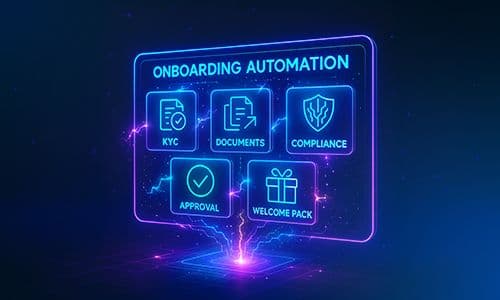How to Start Your Forex Broker Operations in 2025: Expert Guide to CRM and Back Office
Share this article

Launching a forex brokerage is a high-stakes, high-reward endeavour. In 2025, as markets mature, regulation tightens, and client expectations grow, starting a forex brokerage isn’t just about hooking up an MT4 server and marketing aggressively.
Brokers often ask themselves how to approach and start forex broker operations with the right foundation. Success today requires mastering regulatory compliance, selecting the right forex CRM solution providers, designing a scalable white-label forex back-office platform, and ensuring that every technology layer, from onboarding to trade reporting functions seamlessly. A brokerage that ignores any of these pillars is unlikely to survive the intense competitive pressures of 2025.
This guide provides a step-by-step, industry-expert perspective for brokers exploring how to start forex broker operations with a focus on building a strong foundation. From understanding regulatory realities to choosing the right forex CRM solution providers and setting up a powerful back office, you’ll gain a roadmap that balances technology, strategy, and long-term profitability.
Change the mindset before Starting Your Forex Brokerage
Brokers must understand market dynamics, client behaviour, and operational challenges before taking the first step. Many new entrants consider how to start forex broker operations with a clear strategy, efficient systems, and scalable processes to ensure they can compete effectively and build lasting trust with clients. Success today comes from combining business insight with practical execution, rather than focusing solely on technology or compliance.
Key market realities:
- Higher Client Expectations: Instant onboarding, multi-currency deposits, and seamless mobile access are now standard. Brokers launching a new firm must plan their forex CRM solution and back office to meet these expectations.
- Regulatory Pressure: Authorities demand more transparency, requiring robust KYC/AML and real-time reporting. Those exploring how to start forex broker operations responsibly need to embed compliance from day one.
- Technology Arms Race: Brokers compete not only on spreads but on execution speed, CRM usability, and data security. A robust white-label forex back-office platform ensures internal operations can scale without failures.
Starting with this mindset prepares you to evaluate CRM and back-office options with a long-term perspective instead of chasing short-term cost savings. Brokers who consider how to start forex broker operations strategically often gain a competitive edge from day one.
Strategic Foundations for Brokers Looking to start their Forex Brokerage
Laying a solid strategic foundation is the first step for any broker. It ensures your forex brokerage has a clear direction, aligns with market realities, and sets the stage for technology and operational decisions.
Choose Your Business Model
Before exploring forex CRM solution providers or investing in a white-label forex back-office platform, define how your brokerage will operate:
- Agency/STP Model: Directly passes client trades to liquidity providers. Lower risk but dependent on tight technology integration.
- Market Maker/B-Book: Internalizes trades and earns from spreads. Higher margins but requires advanced risk management tools.
- Hybrid Model: Combines both for flexibility.
Each model demands different CRM features and back-office capabilities. For example, a market maker needs strong risk dashboards, while an agency model requires deep liquidity APIs. Brokers often consider how to start forex broker operations in a way that aligns their business model with robust systems and efficient processes.
Key Question:
Which model aligns with your capital, risk appetite, and client acquisition strategy?
Select Your Jurisdiction and License
Your license affects reputation, banking relationships, and client trust. Ask yourself:
- Which jurisdictions match my target clients?
- How do regulatory requirements (capital, reporting, KYC) influence my forex CRM solution and back-office needs?
- What is the cost of ongoing compliance?
In 2025, jurisdictions like Mauritius, Cyprus, and the UAE remain popular, but regulatory tightening demands early legal planning. Brokers exploring how to start forex broker operations globally must factor licensing costs and compliance complexity into the early business plan.
Plan Your Capital and Timeline
A serious start your forex brokerage plan includes capital for:
- Licensing and legal compliance.
- Technology setup (CRM, back office, trading platform).
- Staffing and operations.
- Marketing and IB commissions.
Underestimating capital is a leading cause of failed broker launches. Build a 12–18-month runway, not just a launch budget. Brokers contemplating how to start forex broker operations efficiently should model multiple scenarios, including client growth and regulatory audits.
Step 2 – Understanding the Forex CRM: Your Brokerage’s Frontline
Once your strategic plan is in place, the next priority is your forex CRM solution. Think of the CRM as the central nervous system of your brokerage. It handles client onboarding, KYC verification, account management, deposits/withdrawals, IB commission tracking and a lot more.
What to Expect from Modern Forex CRM Solution Providers
When assessing forex CRM solution providers, look for:
- Smart Onboarding & KYC: Automated ID verification, document uploads, and instant approvals.
- Client Area Customization: Multi-language portals, branded dashboards, and flexible account tiers.
- Payment Gateway Integration: Instant deposit reflection, multi-currency wallets, and withdrawal automation.
- IB/Affiliate Management: Multi-level referral tracking with transparent commission payouts.
- Compliance Features: Audit trails, AML risk scoring, and automated suspicious activity alerts.
- Data Analytics: Client lifetime value tracking, trade volume metrics, and churn prediction.
Brokers often explore forex broker operations with CRM-first strategy to ensure client satisfaction and regulatory readiness.
Questions to ask to CRM Providers
- Can the CRM handle high-volume onboarding without latency?
- How easily does it integrate with my planned trading platform and back office?
- What reporting tools are available for regulatory audits?
- How scalable is the pricing model as my client base grows?
Expert Tip: Don’t focus only on the user interface. A beautiful front end is worthless without robust compliance and reporting tools. A common mistake among brokers learning how to start forex broker operations successfully is underestimating CRM complexity.
Step 3 – Planning the Forex Back Office: The Operational Engine
While the CRM manages client interaction, the back-office powers internal operations: trade reconciliation, risk management, accounting, and compliance reporting. A robust white-label forex back-office platform ensures the brokerage runs smoothly even under high trading volumes.
Core Functions of a Forex Back Office
- Trade Reconciliation: Accurate P&L calculations and automatic error detection.
- Risk Monitoring: Real-time exposure tracking across instruments and client segments.
- Financial Accounting: Automated ledger updates, multi-currency reporting, and tax-ready statements.
- Compliance Reporting: Instant generation of regulatory reports and audit logs.
- Payment Management: Seamless connection with payment processors for deposits and withdrawals.
Key Questions for Back Office Selection
- Does it support real-time data synchronization with the CRM?
- How does it handle peak load conditions during market volatility?
- What level of automation is available for reconciliation and risk alerts?
- Can it generate jurisdiction-specific regulatory reports?
Expert Tip:
Scalability is critical. A back office that performs well with 500 clients may struggle with 5,000 if it lacks an event-driven architecture. Proper planning of how to start forex broker operations with scalable back-office systems is essential.
Step 4 – Bridging CRM and Back Office: Integration Matters
A common mistake when starting your forex broker operations is treating the CRM and back office as separate systems. In 2025, seamless integration is the difference between operational excellence and client frustration. Brokers asking how to start forex broker operations with end-to-end integration often avoid costly technical gaps.
Why Integration Is Critical:
- Real-Time Consistency: Every client action—deposit, trade, withdrawal—must update across all systems instantly.
- Compliance Efficiency: Unified IDs and automated alerts reduce regulatory risk.
- Client Experience: Delays in account updates or fund transfers can drive clients away.
Integration should be planned before purchasing either system. Designing the workflow early prevents costly customizations later.
Step 5 – Compliance and Risk Management Beyond Technology
Even the best forex CRM solutions and white-label forex back-office platforms cannot save a brokerage that ignores compliance. In 2025, regulators expect proactive risk monitoring and instant reporting. Brokers exploring how to start forex broker operations with compliance-first approach are far more likely to succeed.
Key Risk and Compliance Features:
- Advanced AML/KYC: Automated verification with AI-driven risk scoring.
- Real-Time Margin Monitoring: Automated stop-outs and alerts.
- Audit-Ready Logs**:** Immutable transaction history accessible at any time.
Step 6 – Payments, Liquidity, and Client Trust
Technology aside, liquidity management and payment operations are the heartbeat of a forex brokerage. Delays in funding or execution can destroy client trust overnight.
- Liquidity Access: Ensure your trading platform and back-office support multi-provider aggregation for tight spreads.
- Payment Gateways: Clients expect instant deposits and same-day withdrawals.
- Reconciliation: Your back office must track every deposit and withdrawal to prevent disputes.
Brokers considering how to start forex broker operations with a focus on liquidity often gain higher client retention.
Step 7 – Testing and Launching Your Brokerage
Before you officially start your forex brokerage, perform a phased rollout:
- Stress Testing – Simulate high-volume trading, spikes in deposits, and system failures.
- Soft Launch – Start with a small client group to validate workflows.
- Monitoring – Use forex CRM solution analytics to identify bottlenecks and refine processes.
Step 8 – Scaling Beyond the Launch Phase
Launching is only the beginning. A successful broker uses CRM and back-office data to drive growth:
- Expand into new regions with tailored onboarding workflows.
- Introduce new products like crypto CFDs or copy trading.
- Continuously upgrade systems to maintain speed and compliance.
Practical Tips for Brokers Exploring How to Start Forex Broker Operations:
- Start Simple, Scale Smart: Don’t overload your CRM or back office with features you don’t need at launch.
- Ask the Right Questions Early: Integration, compliance, and scalability should guide every decision.
- Prioritize Security: Clients trust brokers who protect data and funds with bank-grade security.
- Invest in People: Technology is only as strong as the compliance officers and risk managers behind it.
Unified Technology for Modern Brokerages
Separating CRM and back-office system can create silos that slow operations, frustrate clients, and increase compliance risk. Modern broker technology, like the solutions offered by FYNXT, unifies CRM and back office into a single platform. This allows your sales, support, compliance, and finance teams to work together in one environment with real-time data, automated processes, and full visibility across all operations.
For brokers looking to start forex broker operations in 2025 efficiently, this unified approach improves operational performance, enhances client trust, and positions the brokerage for long-term growth.
Ready to Transform Your Brokerage?
With FYNXT’s unified platform, you can streamline client management, automate compliance, and integrate back-office operations into a single seamless system. Request a demo today and discover how your brokerage can operate smarter, faster, and more profitably from day one.


